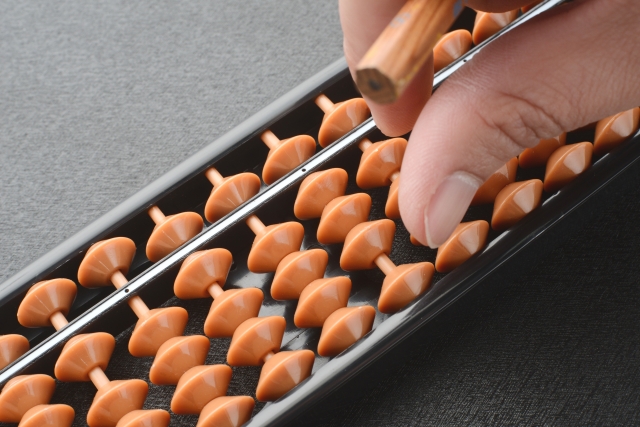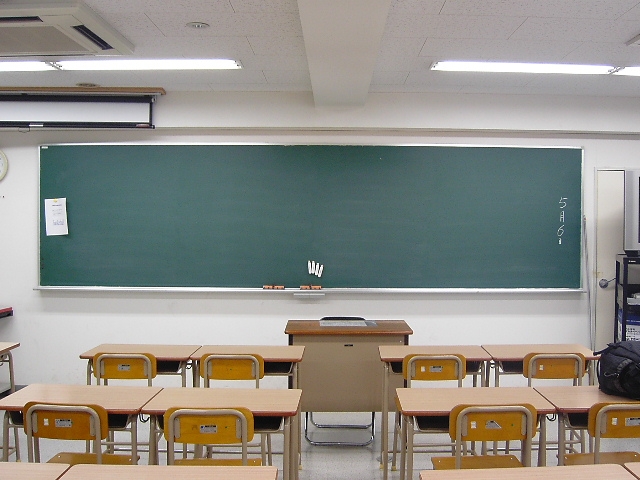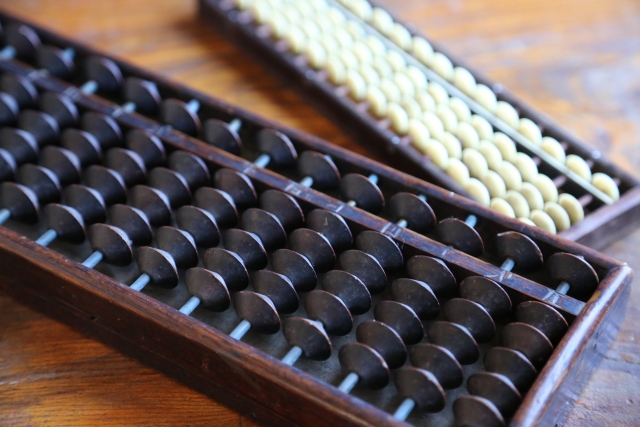Abacus might have been quite replaced by a calculator by now.
But actually, as far as the speed and preciseness are concerned, the abacus would quite surpass the calculator if it is operated by an experienced user.
Soroban

Japanese abacus, called ‘Soroban’ is made to be just simple; a number of rods lined in a rectangle frame. Each rod has 1 bead and 4 beads that are divided by a bar in between.
A bead placed above the bar represents a number of five (5) and the each of 4 beads under the bar means a number of one (1). Therefore each rod counts up to nine (9) and the 10th number shall be carried over to the next rod.
Amazingly, this simple structure enables you to calculate not just addition and subtraction but also multiplication and division of multiple digits

The basic operation of the abacus is taught in a primary school in Japan so everyone already knows how to use it somehow.
Yet it had been a very popular skill to learn as a children’s extracurricular program until some decades back.
At Soroban school, students are trained per grade. The regular exams will scale their ability and label them with grades.
Before the calculator or computer prevailed, the ability to operate an abacus had been an indispensable skill as well as writing and reading to be a literate person. It was a definite requirement to be employed as a banker or an accountant.

If you are a good practitioner, you don't even need an abacus physically to exist at your hand; you can operate calculations with an imaginary one.
Because a visual image of the abacus is firmly established in your brain; it is literally a ‘living computer’.
The competition of this skill is a very exciting match to watch -- it's really spectacular.

